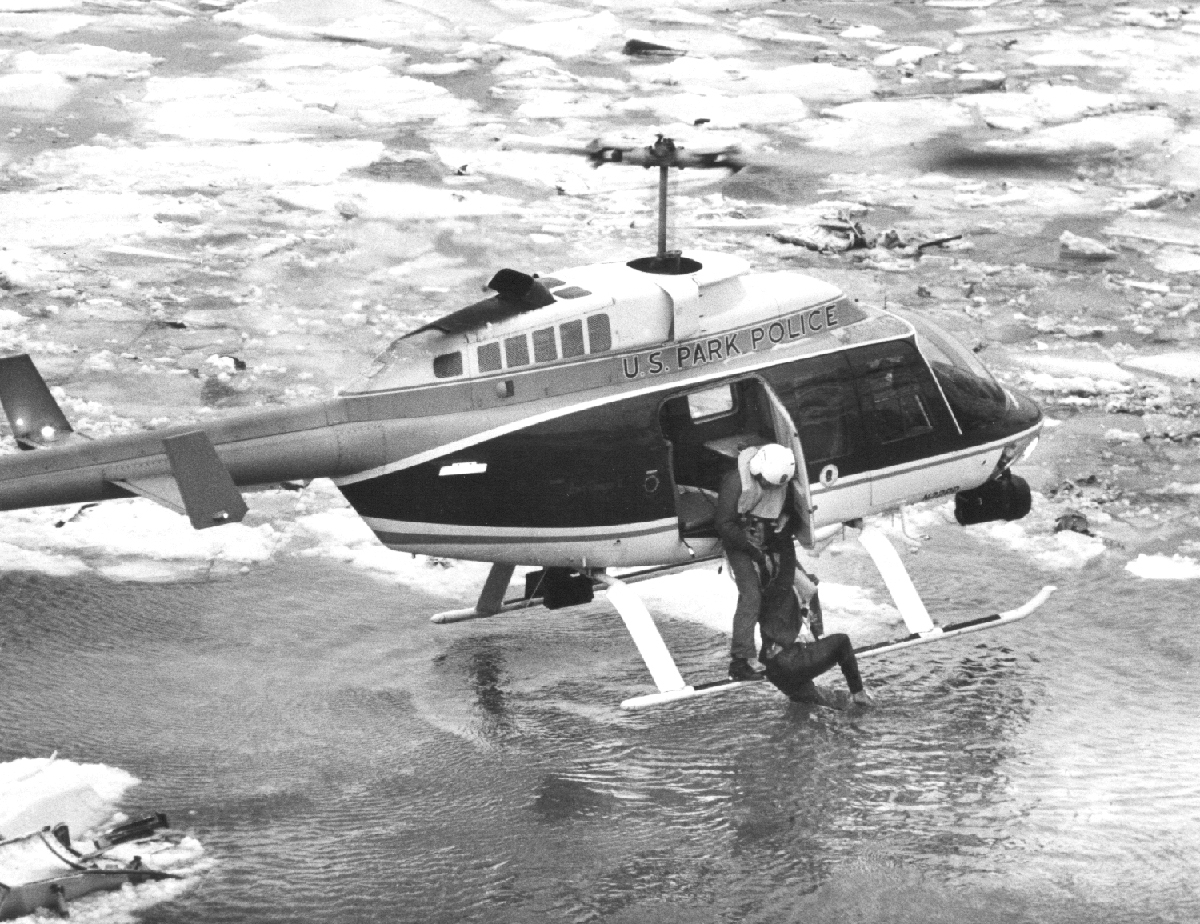


Thirty-five years after the dramatic rescue of survivors of a jet that crashed into the Potomac River in Washington, D.C., one of the four men each awarded the Carnegie Medal for his heroic role participated in a panel discussion on the tragedy in January 2017. Eagle One: Rescue and Recovery of Air Florida Flight 90 was the latest installment in the National Law Enforcement Museum’s Witness to History discussion series.
Participants on the panel were retired U.S. Park Police Pilot Donald W. Usher, who was awarded the medal; Eric Witzig, retired detective from Metropolitan Police Department of Washington, D.C., and Chester Panzer, the only news cameraman to capture the rescue. Craig W. Floyd, the museum’s president, welcomed the 200 guests to the discussion.
The nation’s capital was covered in snow on the afternoon of Jan. 13, 1982, when Air Florida Flight 90 took off from Washington National Airport (now Reagan National) and crashed into the nearby 14th Street Bridge, landing in the icy Potomac River. The impact killed four motorists and 73 of the 79 passengers and crewmembers aboard the aircraft. The survivors dog-paddled in the icy water awaiting rescue, which came from Eagle One, the U.S. Park Police Bell helicopter that was piloted by Usher, then 31, with Melvin E. “Gene” Windsor, 41, aboard as rescue technician.
The federal government had closed early that day, and as commuters made their way over the bridges, the U.S. Park Police received a call from flight control at the airport about a missing aircraft. Usher recalled, “We got the call, ‘I know this sounds weird, but are you guys available to fly?’ The easy answer would have been, ‘we’re unavailable, due to the weather,’ but that wasn’t going to happen.” The snow and wind were so severe they needed a plow to get to the helicopter, which they immediately flew to the crash site.
Panzer was sitting in traffic on another bridge up the river when he received the call from his news station that a plane had gone down in the Potomac. He made his way to the site and started shooting video of the victims being pulled from the river by the helicopter. “We stayed out of the way and blended in…we certainly didn’t want to get in the way of saving lives.”
The audience watched Panzer’s footage of the incident, including rescues of the survivors by Usher and Windsor. At one point in the video, the helicopter’s skid is shown briefly submerged in the water while a survivor was being extracted, a dangerous move. “I actually didn’t know the skids were in the water until Gene told me,” Usher said, “which I fixed rapidly after that.”
Witzig spoke about the lack of communication options between the responding agencies. “Communications are better today than they were 35 years ago, however, they are not as good as they could be,” he said. “We made the recommendation 35 years ago that I should be able to talk to [Usher]. That’s two different departments, two different functions, but I needed to communicate with him and couldn’t do it.”
The metropolitan police were in charge of the recovery of the passengers’ bodies, which spanned 11 days. “You can imagine how hard it was for the diver to find people,” Witzig said, “but everyone was found.” It was exceptionally emotional when he mentioned that a survivor’s 18-month-old baby was the last body to be pulled from the wreckage.
Special recognition was given to Arland D. Williams, Jr., who survived the crash but was trapped in the wreckage. Williams continually passed the rescue rope to other survivors. The rebuilt portion of the 14th Street Bridge was renamed in his memory.
In addition to Usher, Carnegie Medals were awarded to Windsor; Roger W. Olian, 34, a commuter who entered the river in an attempt to reach the survivors; and M. L. “Lenny” Skutnik III, 28, who plunged into the river to aid one of the victims being towed toward the bank by Usher and Windsor. Eagle One, the helicopter used in the rescue, will be on permanent display at the National Law Enforcement Museum when it opens in 2018.
Return to imPULSE index.
See PDF of this issue.

